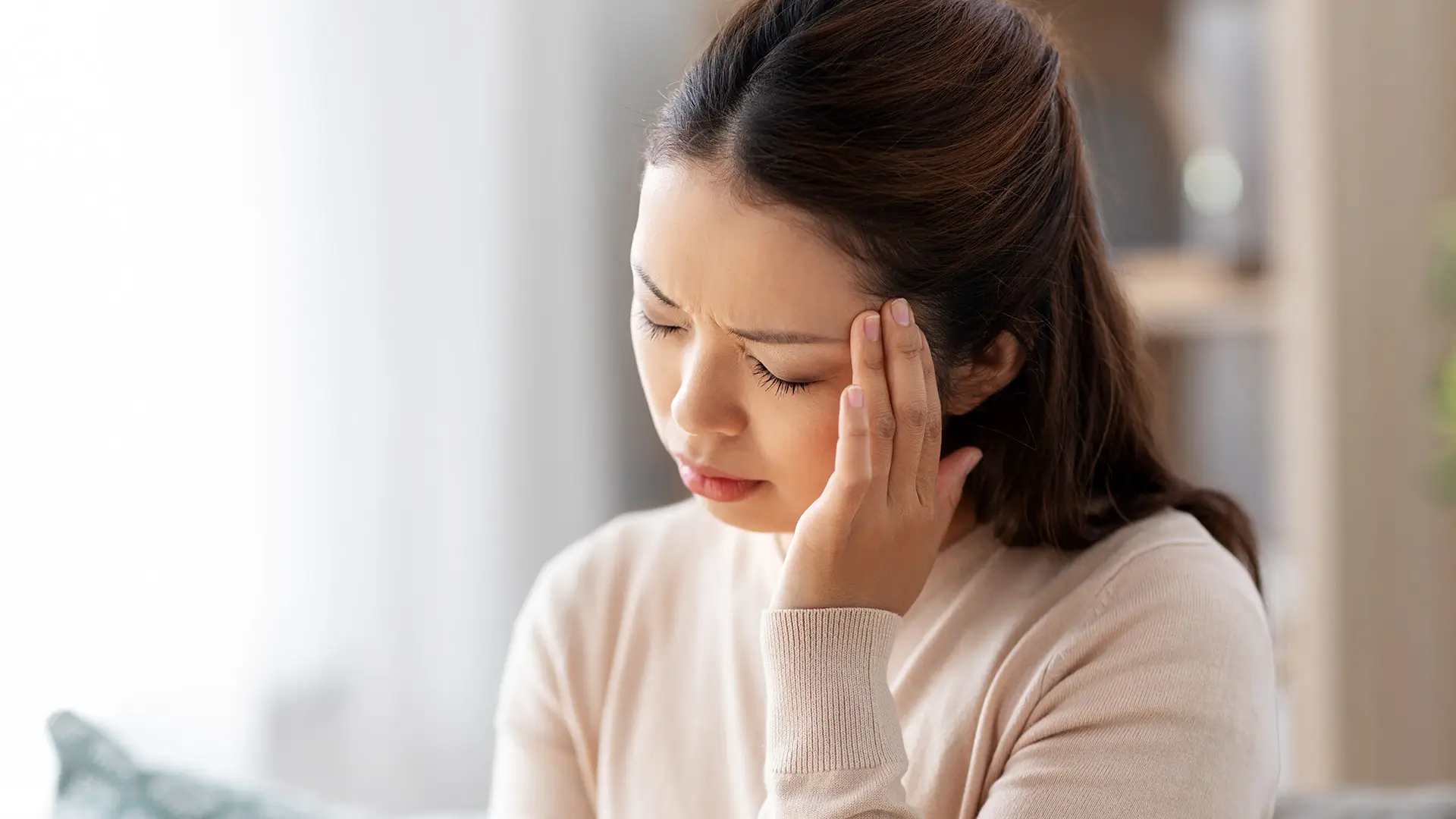For millions of people across the U.S., headaches and migraines are more than just a temporary inconvenience—they’re a persistent, often debilitating part of daily life. In fact, it’s estimated that nearly 1 in 6 Americans suffer from migraines, and almost everyone will experience a headache at some point.
These conditions can interfere with work, relationships, and overall well-being, leaving many feeling frustrated, exhausted, and desperate for relief. But there is hope. By understanding the underlying causes and triggers, you can find long-term migraine and headache relief.
Understanding Headaches vs. Migraines
While the terms “headache” and “migraine” are often used interchangeably, they are actually distinct conditions with different causes, symptoms, and treatment approaches. A headache is a general term that refers to pain or discomfort in the head, scalp, or neck. These can range from mild tension headaches—often triggered by stress, poor posture, or dehydration—to more intense forms like cluster headaches.
A migraine, on the other hand, is a neurological condition that typically involves more than just head pain. Migraines often present as severe, throbbing pain—usually on one side of the head—and may be accompanied by nausea, vomiting, and sensitivity to light or sound. Some people also experience visual disturbances known as auras before a migraine attack begins.
Common Causes of Headaches
So what causes headaches? It depends on the type of headache, but some common causes of headache include food triggers, allergies to foods and medications, lack of sleep or changes in sleep habits, fatigue, stress, and changes in eating habits.
These are some of the most common types of headaches:
- Tension headaches: Tension headaches are the most common type and are often linked to stress, fatigue, or muscle strain in the neck and shoulders.
- Cluster headaches: Cluster headaches are less common but extremely painful. They tend to occur in cyclical patterns or “clusters,” often around the same time each day.
- Sinus headaches: These headaches are caused by inflammation or infection in the sinus cavities, often linked to allergies or upper respiratory infections.
- Dehydration headaches: When the body lacks enough fluids, it can trigger a headache due to reduced blood volume and oxygen flow to the brain.
Cervical spine conditions are another potential source of headache and migraine pain. A physician or pain management specialist can help determine if that is a contributing factor.
Common Causes of Migraines
While the exact cause of migraines may vary from person to person, many migraines are linked to underlying neurological, hormonal, or environmental influences.
Some influences that commonly trigger migraines include:
- Hormonal fluctuations (especially in women around menstruation or menopause)
- Certain foods and additives (like aged cheese, chocolate, MSG, or nitrates)
- Bright lights or strong smells
- Stress and emotional overload
- Caffeine withdrawal or overuse
- Weather or barometric pressure changes
- Dehydration
- Sensory overstimulation (loud noises, flashing lights)
- Neck or spinal misalignment
Effective Treatments for Headaches and Migraines
Finding lasting relief from headaches and migraines doesn’t have to be complicated—or costly. Here are some simple and effective strategies for reducing and preventing head pain.
Lifestyle Changes
Your daily habits have a major impact on headache and migraine patterns. Small adjustments can lead to big improvements over time.
Tips to try:
- Stick to a consistent sleep schedule and aim for 7–9 hours each night
- Eat regular, balanced meals to stabilize blood sugar
- Stay well hydrated—aim for 8+ glasses of water daily
- Incorporate daily movement or light exercise to boost circulation and reduce tension
Home Remedies
Natural and at-home approaches can also be surprisingly effective, especially when used at the first sign of discomfort.
Home remedies to try:
- Apply a cold or warm compress to the forehead or neck, depending on the type of headache
- Rest in a dark, quiet room to reduce sensory stimulation
- Try essential oils like peppermint or lavender on the temples or behind the neck
- Use a heating pad or take a warm shower for tension-related headaches
Over-the-Counter Medications
OTC medications can offer fast relief when used appropriately, especially for occasional headaches and milder migraines.
Tips to try:
- Use ibuprofen, acetaminophen, or aspirin at the first sign of pain
- Be cautious with frequent use—overuse can lead to rebound headaches
- Consider combination medications (with caffeine) for migraine-specific relief
Alternative Therapies
For those with chronic or stubborn symptoms, advanced and holistic therapies can provide long-term relief by addressing the root causes.
Therapies and treatments to explore include:
- Acupuncture or dry needling to release tension and balance energy pathways
- Trigger point or regenerative injections to treat muscle knots and soft tissue dysfunction
- Platelet-Rich Plasma (PRP) or Bone Marrow Aspirate Concentrate (BMAC) for those with underlying cervical spine conditions
- Chiropractic or physical therapy to correct posture and alignment issues
- Clinical BOTOXⓇ for migraine treatment to block the release of certain pain-related chemicals in the nerves, helping to prevent migraine attacks before they start.
When to Consult a Specialist for Headache Relief
Headaches and migraines can feel overwhelming—but with the right knowledge and support, they don’t have to control your life. By understanding the type of headache you’re experiencing, identifying your unique triggers, and exploring a range of treatment options, you can find lasting relief.
If you’ve been struggling with chronic migraines or headaches, contact the spine and musculoskeletal experts at the Center for Healing and Regenerative Medicine (CHARM.) Pain doesn’t have to define your life—schedule a consultation today to explore regenerative treatment options for improved health.

